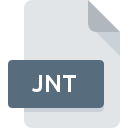.JNT File Extension

Windows Journal File
| Developer | Microsoft |
| Popularity | |
| Category | Data Files |
| Format | .JNT |
| Cross Platform | Update Soon |
What is an JNT file?
.JNT file extension is primarily associated with the Journal Document file format used by Microsoft Windows Journal.
This application, part of the Windows operating system in versions like Windows XP Tablet PC Edition, was designed for note-taking, drawing, and handwriting recognition.
The .JNT file format is proprietary to Microsoft and specifically tailored for the Journal software, representing the digital strokes and notes made by the user.
More Information.
The initial purpose of the .JNT file was to provide a digital platform for note-taking and drawing that could replicate the experience of using pen and paper.
The file format was designed to store handwritten notes, drawings, and annotations. Over time, it became a valuable tool for users who preferred writing over typing, especially in educational, business, and creative fields.
The popularity and usage of the .JNT file format and Windows Journal applications have fluctuated over the years, particularly with the advent of more advanced note-taking applications and the phasing out of Windows Journal in newer versions of the Windows operating system.
Origin Of This File.
The .JNT file format originated from Microsoft’s initiative to enhance digital note-taking capabilities, especially for devices with stylus support.
Windows Journal, the application using this format, was first introduced in Windows XP Tablet PC Edition, marking Microsoft’s foray into integrating handwriting recognition into operating systems.
This move was a response to the growing popularity of tablet PCs and the need for software that could effectively capture and process handwritten notes and drawings.
File Structure Technical Specification.
The .JNT file format is structured to store stroke and handwriting data. It includes:
- Metadata: Information about the document such as the author, date created, and modification details.
- Ink Data: This includes the strokes made by the pen or stylus, capturing the pressure, angle, and speed of writing or drawing.
- Text and Formatting: Any text entered either through handwriting recognition or keyboard input, along with formatting details.
The technical specifications of the .JNT file format is proprietary and not openly documented since it was designed to be used exclusively with Windows Journal.
How to Convert the File?
Converting .JNT files, primarily associated with Windows Journal, into more universally accessible formats, is often necessary due to the limited compatibility of the .JNT format.
Here’s a detailed guide on how to achieve this conversion:
- Using Windows Journal:
- Open the File: Start by opening the
.JNTfile in Windows Journal. - Print to PDF: Select the ‘Print’ option from the File menu. Instead of a physical printer, choose a ‘PDF printer’ (like ‘Microsoft Print to PDF’ if available).
- Save as PDF: Follow the prompts to save the file as a PDF. This PDF file can then be opened on virtually any device.
- Open the File: Start by opening the
- Using Online Conversion Tools:
- Find a Reliable Tool: Search for online services that offer
.JNTPDF/DOC conversion. Ensure the tool is reputable to avoid security risks. - Upload and Convert: Upload the
.JNTfile to the service and select the desired output format (PDF, DOC, etc.). - Download the Converted File: Once the conversion process is complete, download the file to your device.
- Find a Reliable Tool: Search for online services that offer
- Using Third-party Software:
- Download a Conversion Tool: There are specific software programs that can convert
.JNTfiles to other formats. Install one after verifying its reliability. - Convert the File: Open the
.JNTfile in the software and follow the instructions to convert it to your preferred format.
- Download a Conversion Tool: There are specific software programs that can convert
Advantages And Disadvantages.
Advantages:
- Natural Writing Experience: The
.JNTformat is excellent for capturing the nuances of handwriting, making it ideal for note-taking and sketching. - Integration with Windows: Being a Microsoft product, it offers seamless integration with certain versions of Windows.
Disadvantages:
- Limited Compatibility: The biggest drawback is its limited compatibility with software outside of Windows Journal.
- Obsolescence: With the discontinuation of Windows Journal, the
.JNTfiles have become less relevant and harder to access in newer operating systems.
How to Open JNT?
Open In Windows
- With Windows Journal: If you have an older version of Windows with Windows Journal, simply double-clicking the
.JNTfile will open it. - Without Windows Journal: On newer versions of Windows, you might need to install a compatibility pack or third-party software that can read
.JNTfiles.
Open In Linux
- Conversion Required: Linux systems do not support
.JNTfiles natively. Convert the file to a more common format like PDF using the methods mentioned above. - Use Wine: Alternatively, you can use Wine, a compatibility layer capable of running Windows applications on Linux, to run Windows Journal or other compatible software.
Open In MAC
- Conversion is Key: Like Linux, macOS does not natively support
.JNTfiles. Convert the file to PDF or another Mac-compatible format. - Using Virtual Machine: Running a Windows virtual machine on a Mac can be another solution, allowing you to use Windows Journal or similar applications within the virtual environment.
Open In Android
Open In IOS
Open in Others
Mobile platforms typically do not support JNT files. The recommended approach is to convert JNT files to a widely supported format (like PDF or JPG) using a desktop application or an online service. The converted files can then be transferred to the mobile device for viewing.













